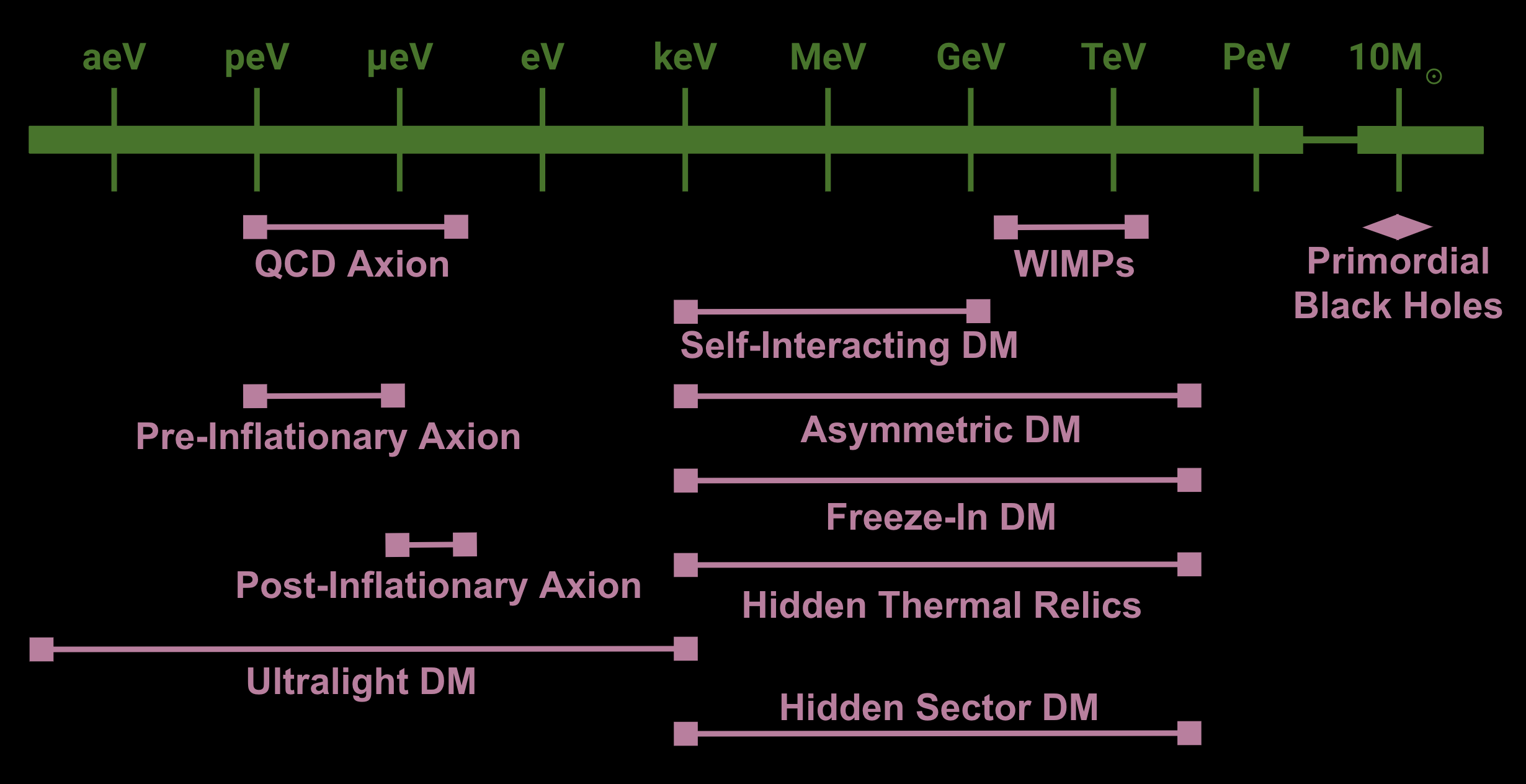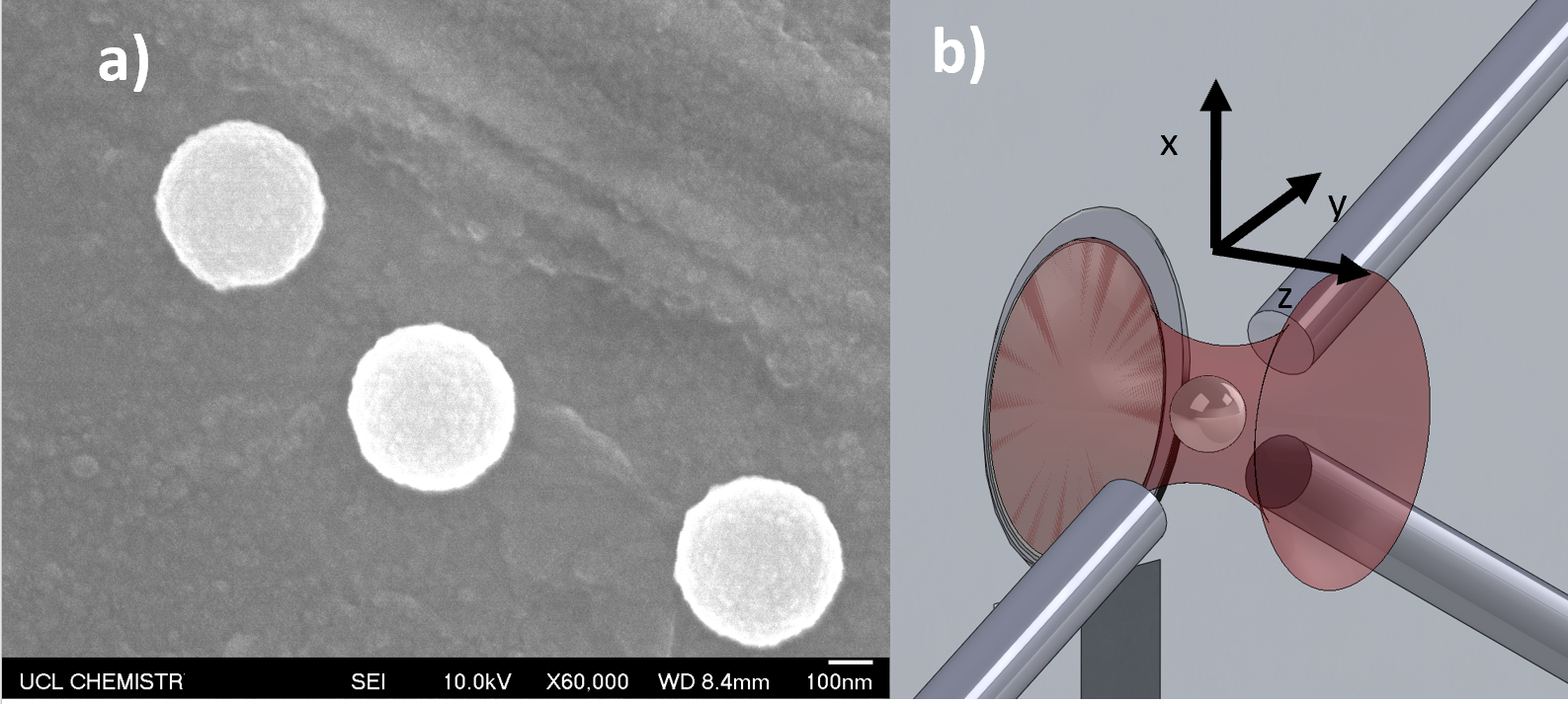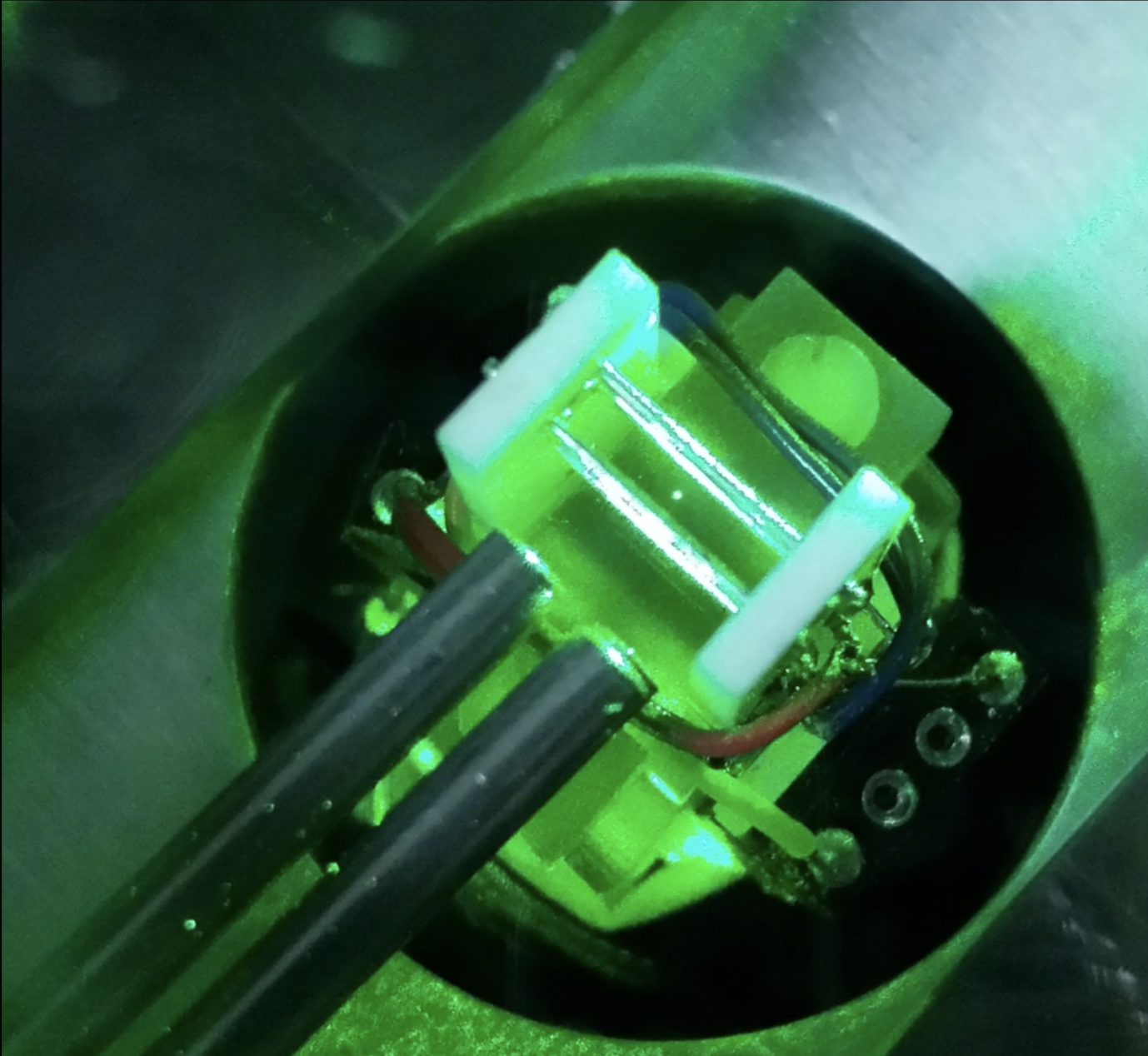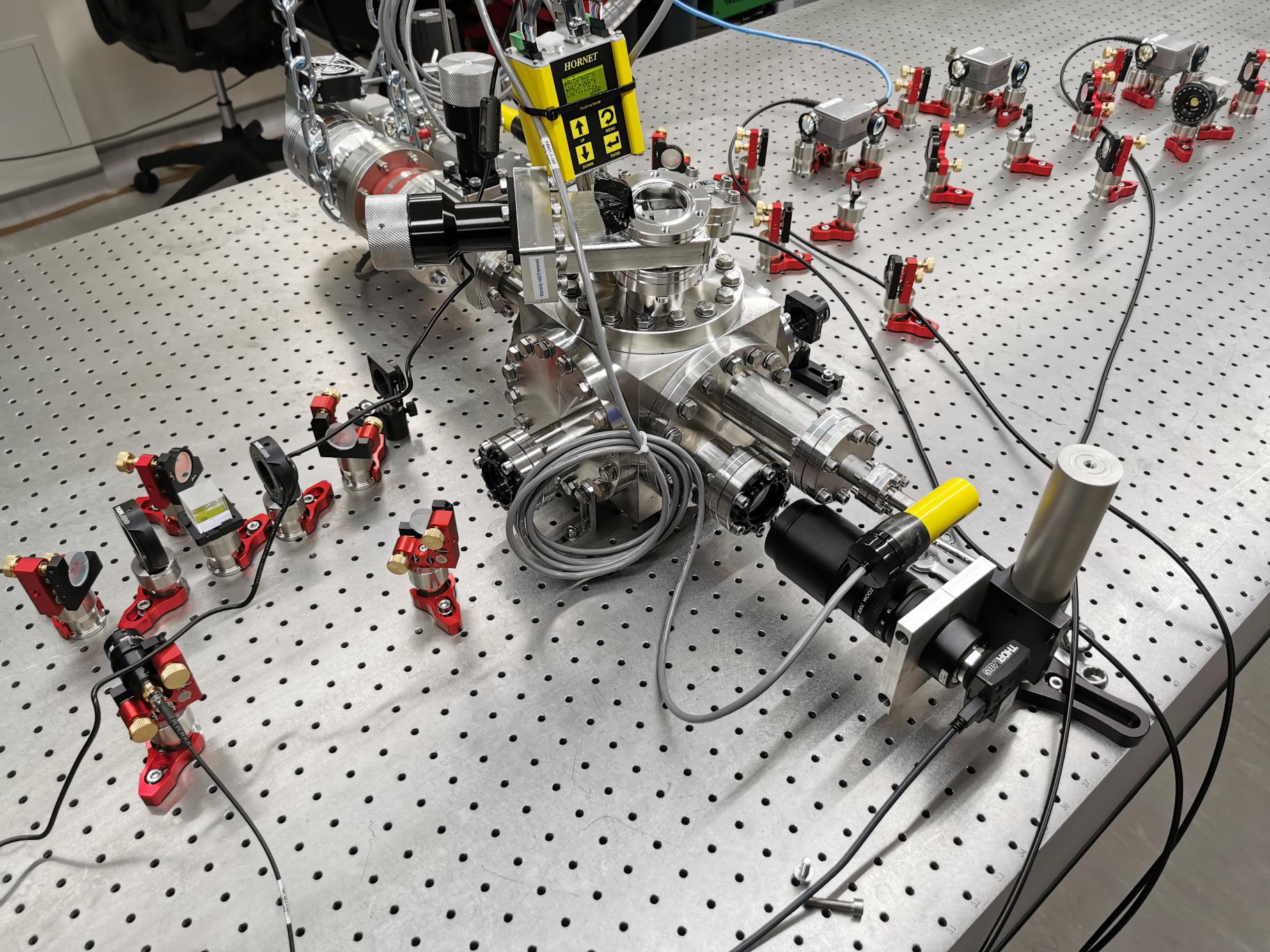Quantum Sensors: Novel directional dark matter detectors
Efforts to detect galactic dark matter directly have thus far been primarily focused on candidates such as WIMPs or axions; these are theoretically well motivated candidates that can provide solutions to the missing mass problem in the universe. However, astrophysical and cosmological bounds are satisfied by a vast number of different candidates beyond these, spanning over 30 orders of magnitude in mass; some of the candidates and indicative mass scales are illustrated below. Most of the available parameter space where such candidates may be detected has to-date been largely inaccessible and is yet to be explored. Dark matter detection may come from anywhere and it is important to leave no stone unturned in the quest for discovery.

The use of levitated quantum optomechanics as a novel technique only begining to be explored as a method to test fundamental physics. Nanospheres, levitated utilising the trapping potential provided by either an optical tweezer or Paul trap setup, coupled with quantum ground state cooling, act as highly sensitive accelerometers. The ability to measure interactions on the scale of atto-Newtons, and the isolation afforded by levitation in vacuum, allows for extremely sensitive measurements of weak forces at both short and long range. At UCL we are developing an experimental system to deploy this technique in the search for very light dark matter, complementing the relatively higher mass searches with LZ and future G3 operating large xenon targets in deep underground laboratories. In addition to exquisite sensitivity to very light dark matter prticles, this technique can provide unique directional information about the signal to discriminate against terrestrial backgrounds and deliver robust evidence for galactic dark matter.


The experiment, being conducted by the UCL dark matter group in collaboration with colleagues in the AMOPP Group, is located in UCL's new low noise 'Quantum measurement' laboratory. The first phase of a series of measurements of ever increasing sophistication is in progress, with comissioning and calibration for the first dark matter search nearing completion for science data taking later in 2022. This very first run is expected to delier world-leading sensitivity to uncharted parameter space and we will build on this through the quantum sensor programme to extend the experimental reach to further dark matter candidates as well as developing novel probes of BSM physics.

